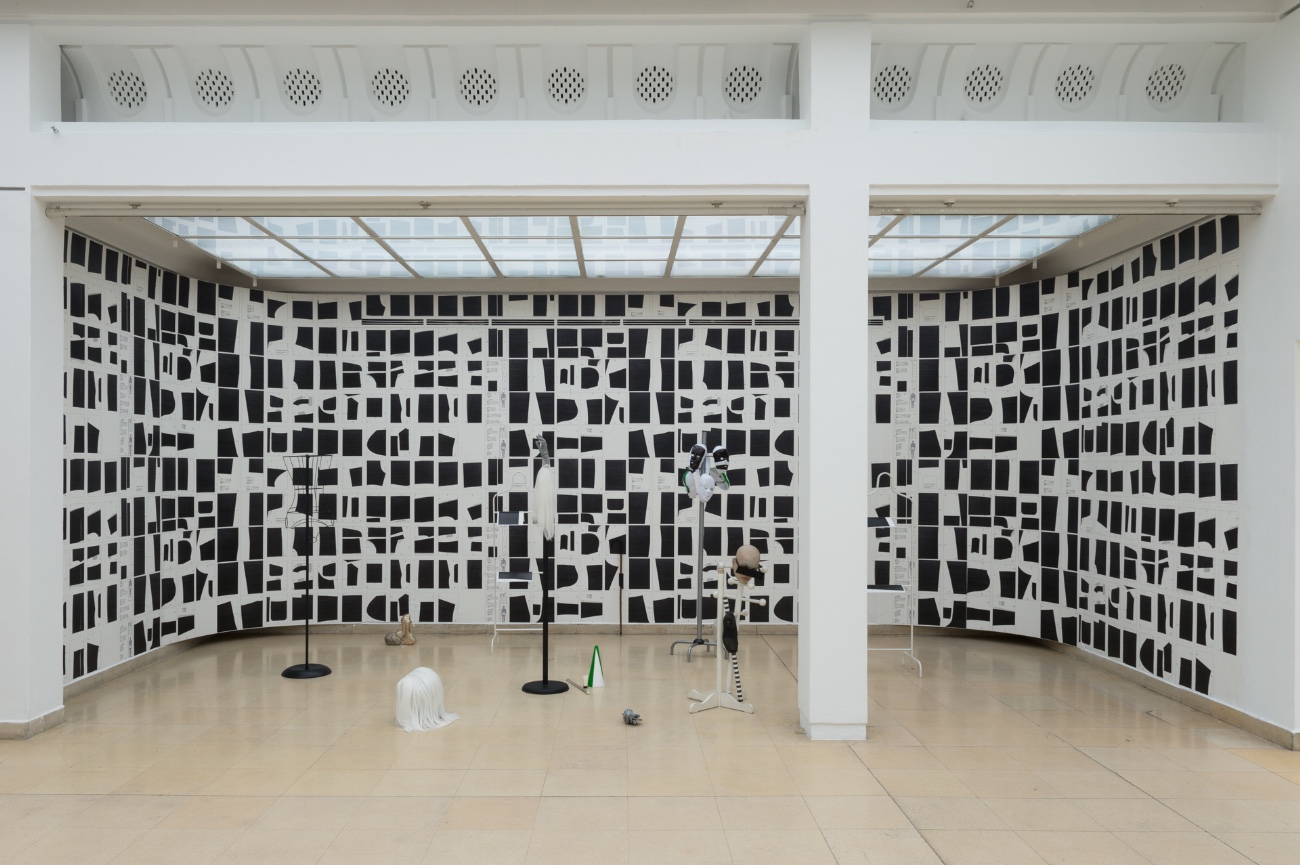
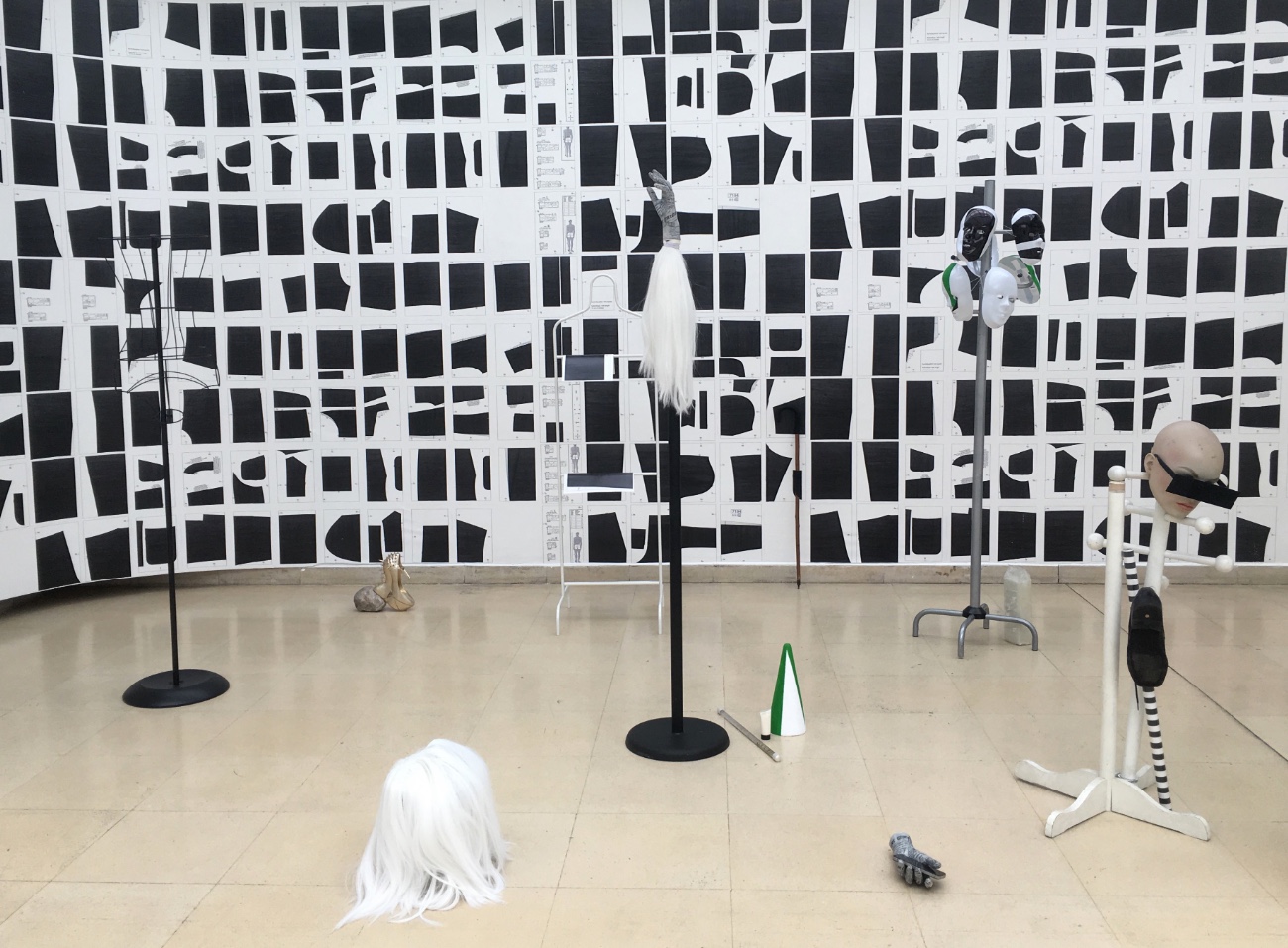
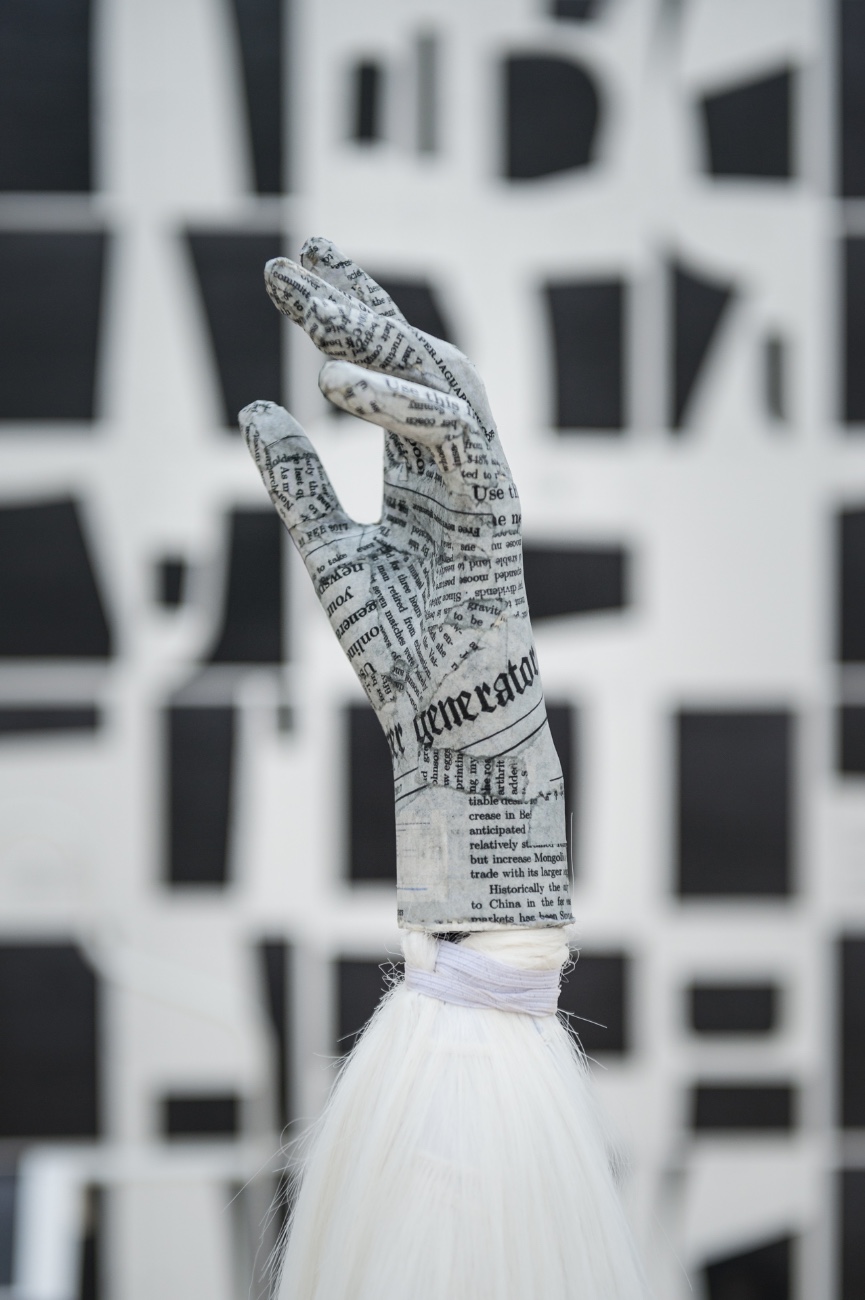
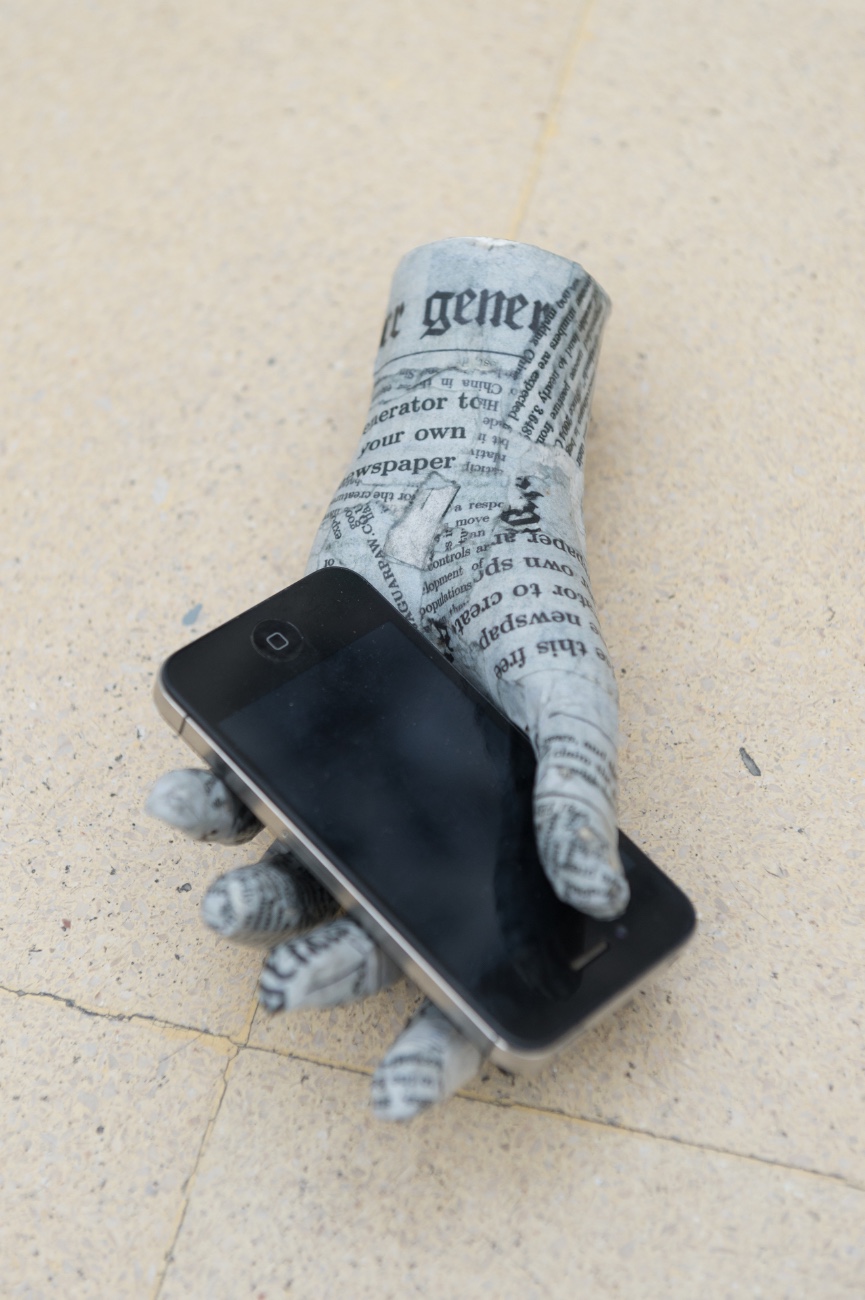
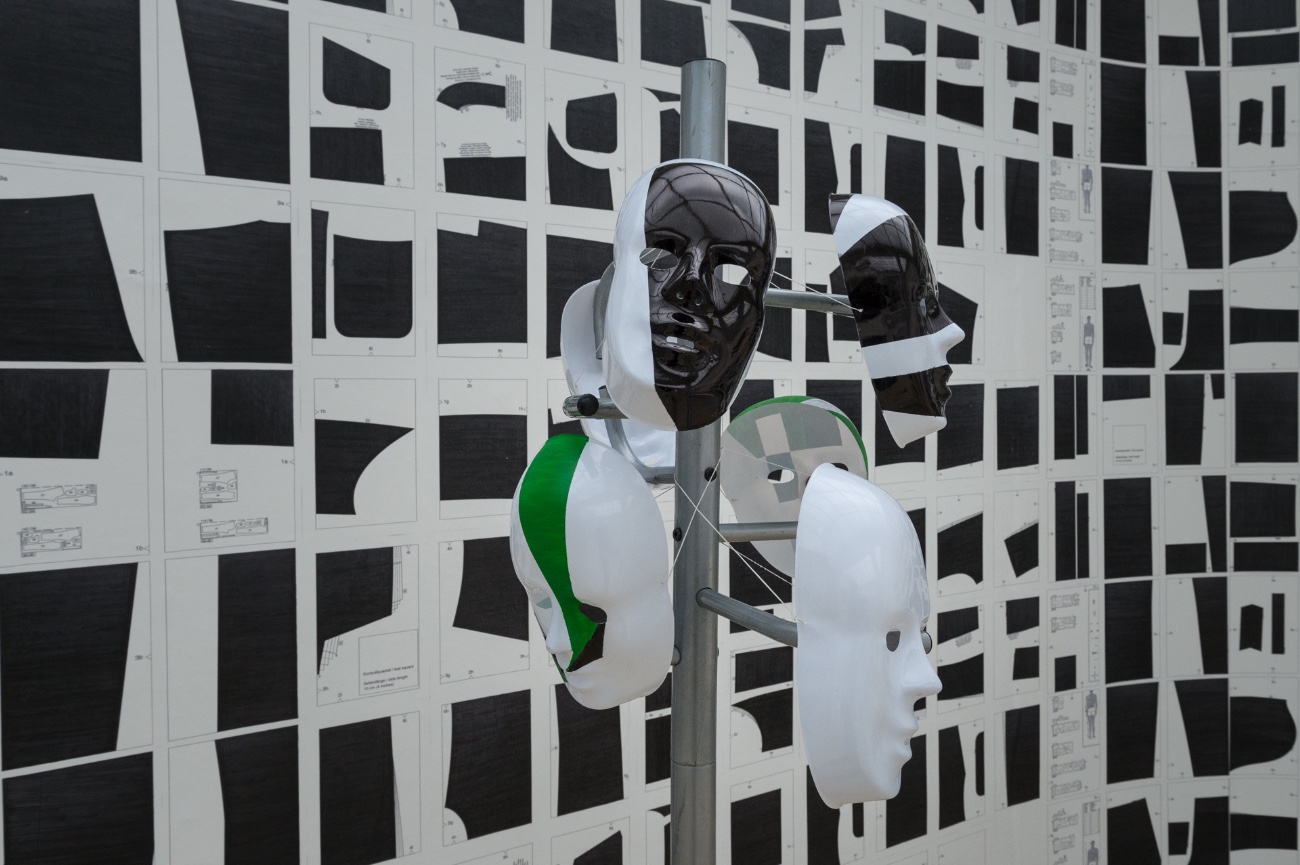
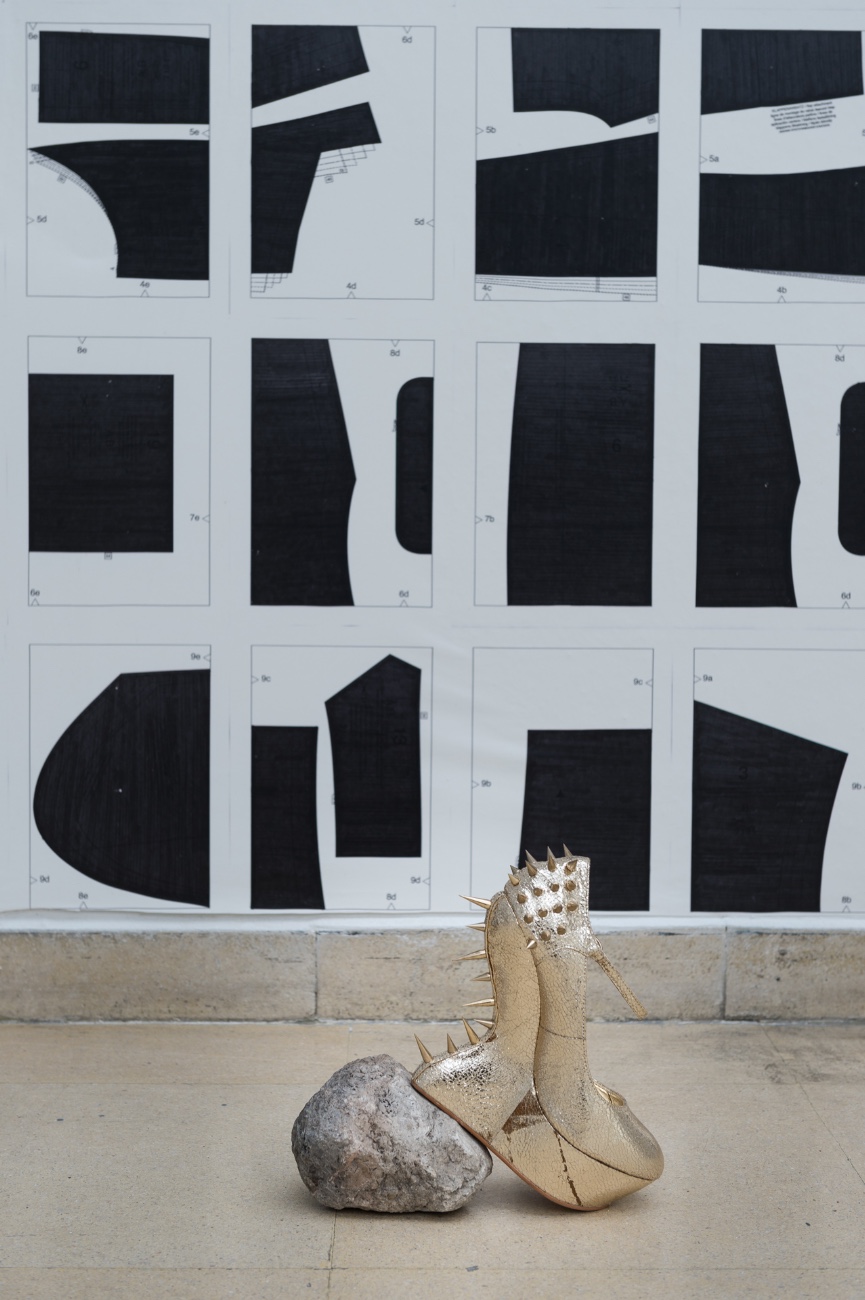
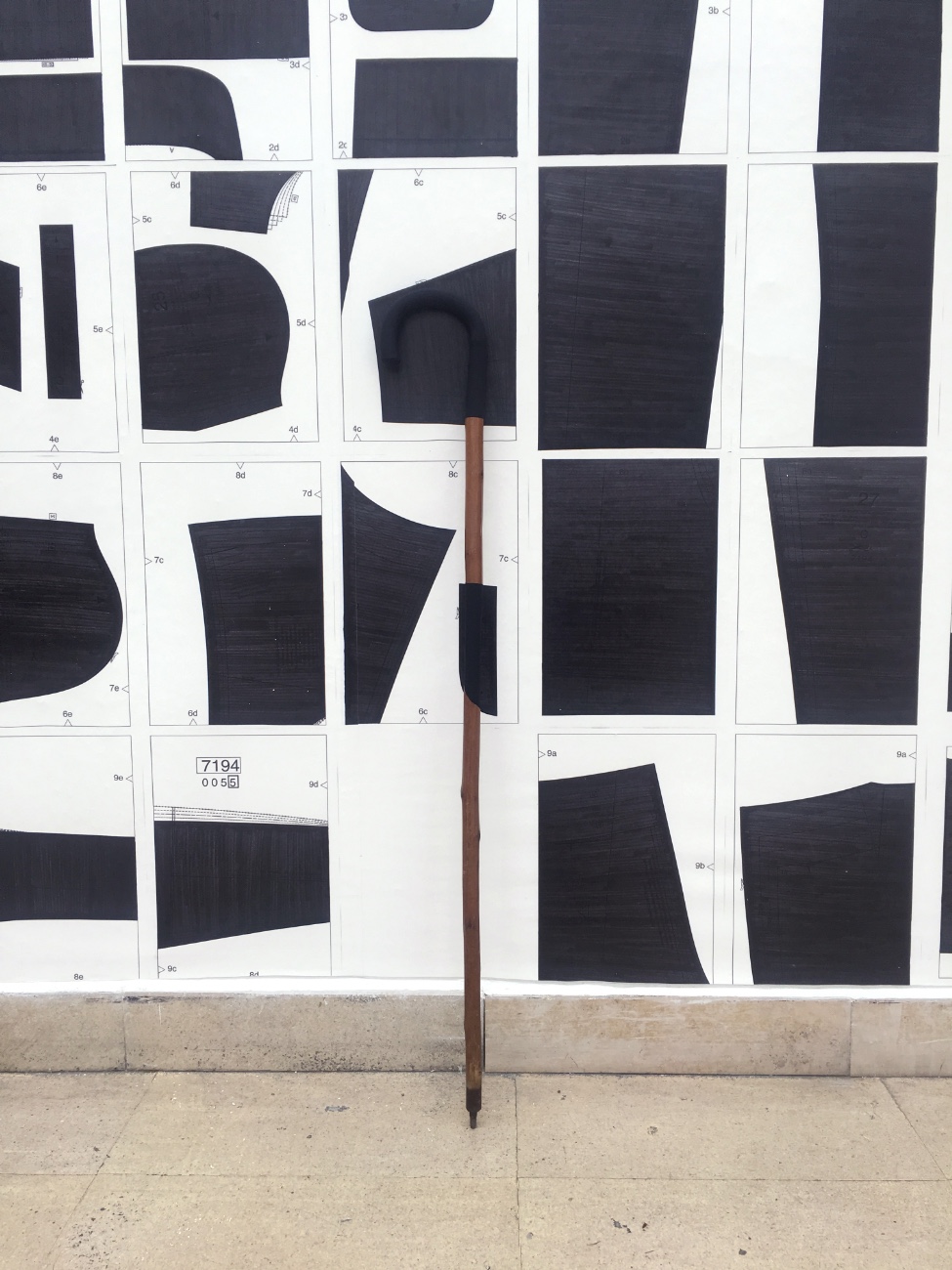
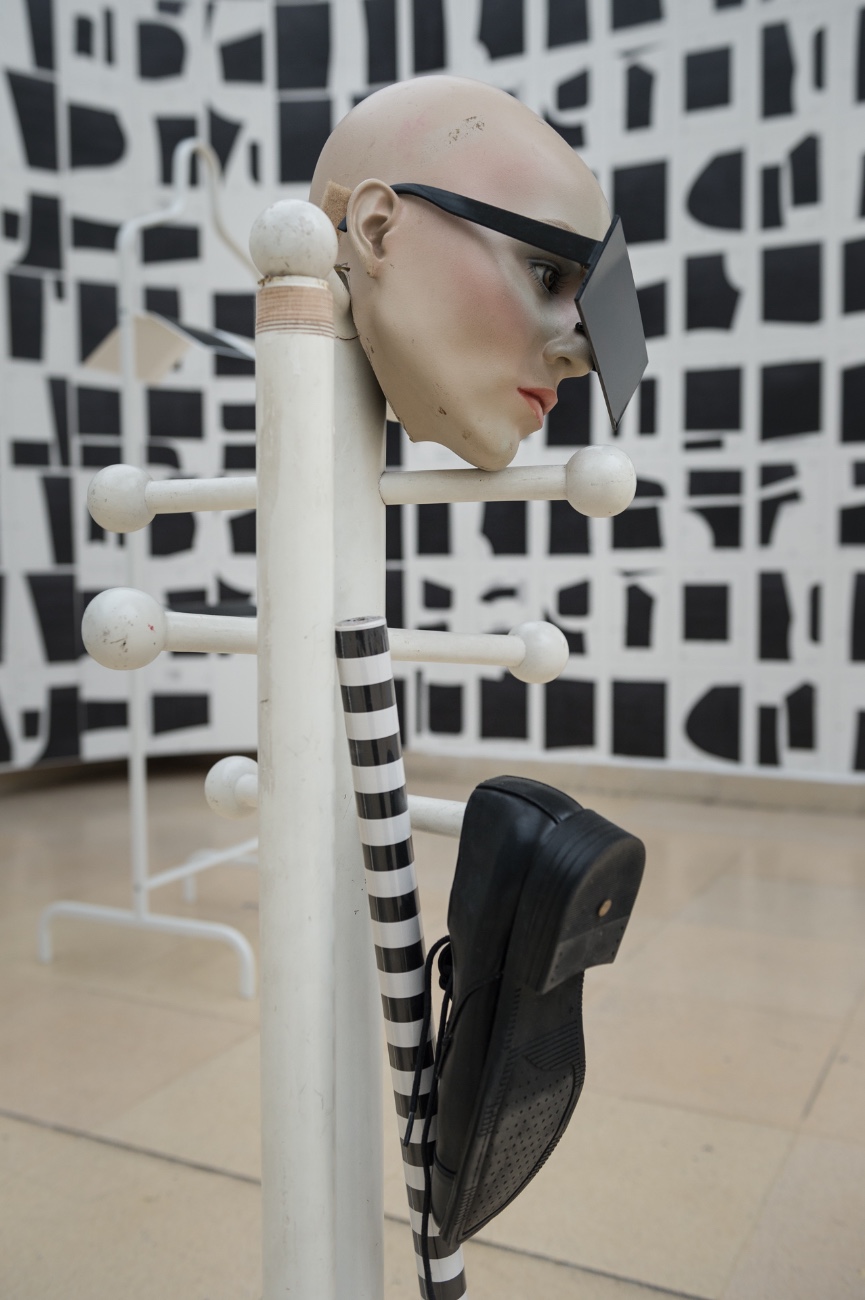
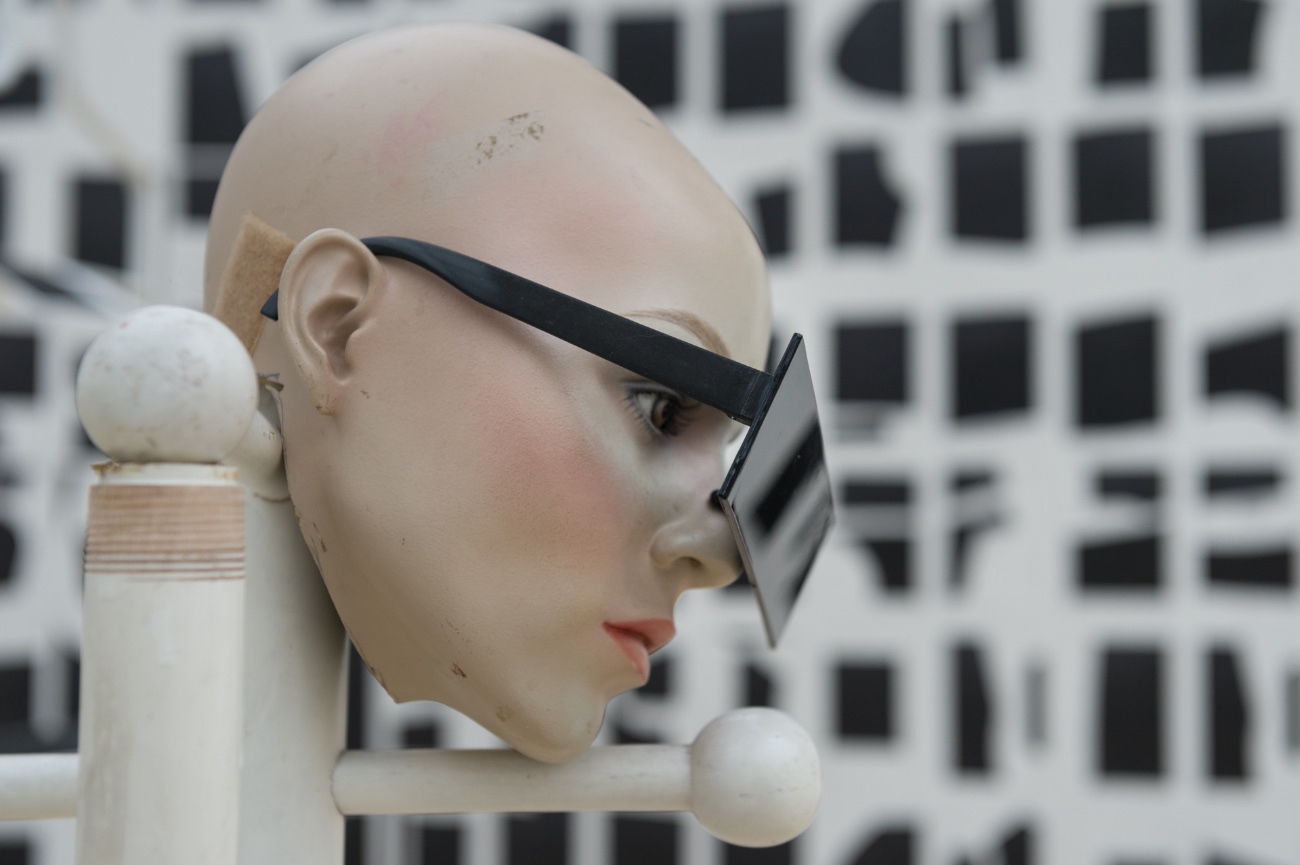
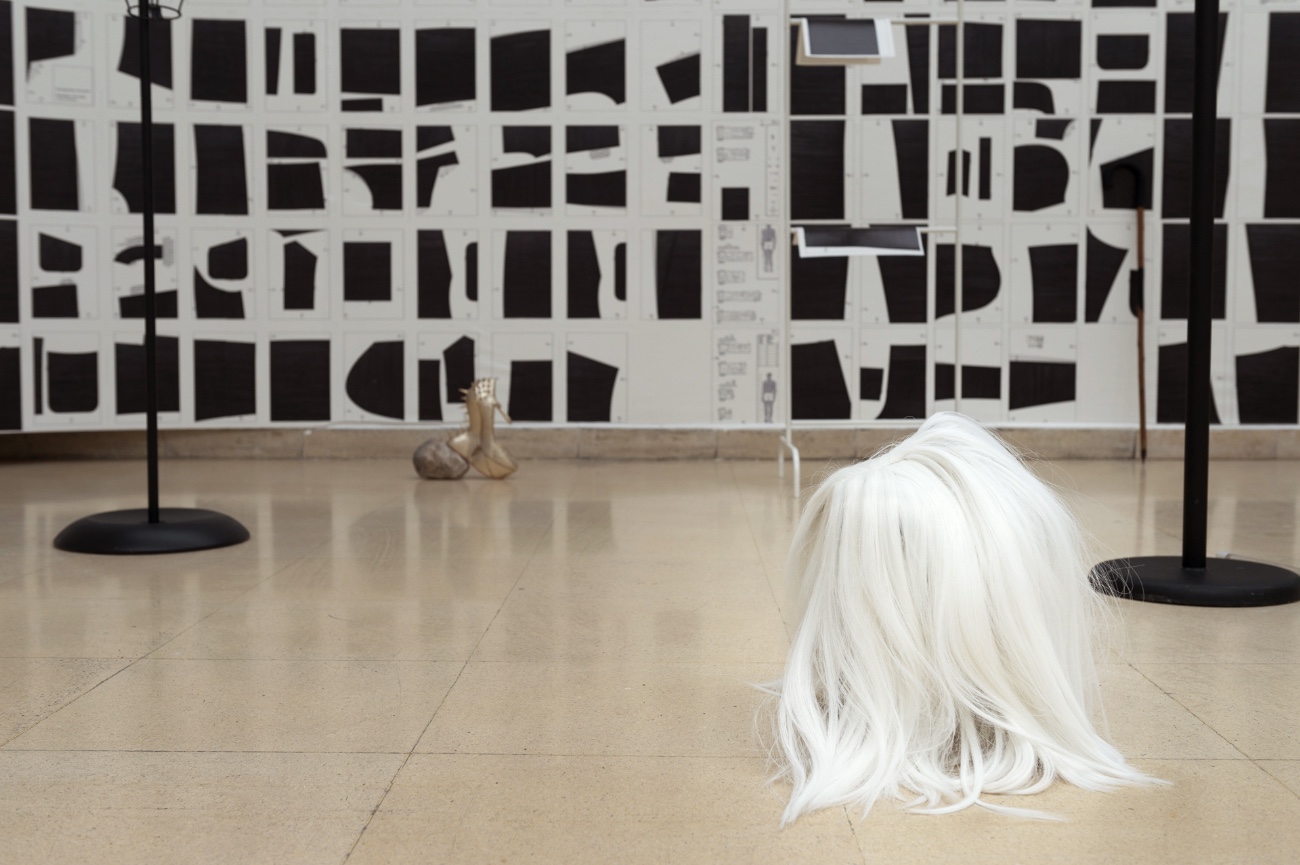
imposture (digression on adornment)
2018, installation :
- matériaux divers, papier peint (réalisé à partir d’un patron de costume), faux murs courbant les angles de l’espace, son (diffusé par un téléphone)
vues d’exposition :
- «A part that is missing never breaks», Kunstpavillion, Innsbruck, Autriche
text by Andrei Siclodi, director of Künstlerhaus Büchsenhausen
As a provisional materialization of her preoccupation with forms of disappearance and becoming invisible, Julie Sas has produced a semantic experimental setup as a stage-like setting, tensely interlocking two existential modes of anonymity : in opposition to a rigid state of impersonality, of nameless, the lack of qualities and of the immateriality of the body (« passive » mode), she sets potentially dynamic tactics that blur the boundaries, aiming for the production differentness, breaches in identity, discontinuity, and opacity (« active » mode). The artist unfolds a sculptural ensemble against the background of a wallpaper that partially alienates the layout of the given space by rounding the corners of the room and creating a pattern that clearly seeks to confuse the eye. This « dazzle dazzle », this camouflage, consists of dressmaking patterns available to download free online - from which one could create individual costumes. Sas « individualized » the patterns with black bars obviously executed by hand, then scanned and assembled them as an overall pattern. Standardization thus turns into ornamentation, and the oscillation between the generic and the specific, between normativity and eccentricity becomes evident as a mean of design. Sas continues applying this technique consistently in her sculptural works : within the dialectic field of tension between the cited parameters, on various levels their components articulate the search for possibilities of physical disguise by turning the generic against itself. Thus the installation comprises objects and components generally used as « stylistic improvement prostheses », which appear here, however, as a setup alienating this significance; masks are covered in colored geometric patterns that seek to undermine the face-recognition algorithms of CCTV cameras; a shop dummy head wears spectacles in form of a black bar; collages scraps of self-printed newspaper with invented content (also freely available online) cover shop dummies’ hands etc. Finally, the installation is hold together once more on the auditive level : from time to time, we hear a computer voice from the mobile phone lying in the hand covered with newspaper. It is reading out passages from « How to disappear completely and never be found » by Doug Richmond : a practical guide to disappearance published in the 1980s. The occasionally scurrilous sound of the artificial voice is achieved with the help of the program Auto-Tunes, a software popular in the field of music which was developed to retrospectively correct voices when singing off key.

